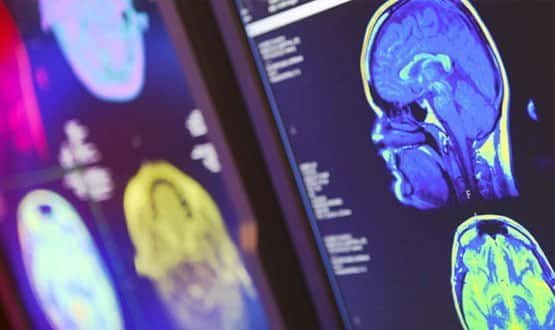EHI interview: Dr Neelam Dugar
- 11 March 2013

Initially a special interest group of the Royal College of Radiologists, the UK Imaging Informatics Group is today the UK’s leading forum for debate about digital imaging systems.
Dr Neelam Dugar has just stepped down as its chair, after almost six years in the role. She is still a consultant radiologist at Doncaster and Bassetlaw Hospitals NHS Trust, which is about to complete a major reprocurement of its picture archiving and communications system, radiology information system, and related technologies.
How did you get so interested in IT?
After qualifying as a consultant radiologist back in 2002, informatics was still relatively new to me, but I recognised how important it would be to the future of our profession.
I’ve always enjoyed problem solving, so when I needed to link two workstations in different hospitals within my trust, I relished the challenge. I’m also quite resourceful, so having quickly befriended the network manager and IT guys, I was soon able to transmit images for multi-disciplinary team meetings.
We were still using film back then, but I could see that soft copy reporting using PACS was far more efficient – particularly in computerised tomography – because you could scroll rapidly through multiple images.
So it was quickly dawning on me how my clinical practice could be greatly enhanced using IT. I was also encouraged by the prospect of a National Programme for IT in the NHS; but this enthusiasm was soon dampened as my requests for a PACS system to save the trust money on expensive film repeatedly met with resistance from management.
And how did you get involved in what became the UK Imaging Informatics Group?
About this time, I chanced upon the PACS forum led by Dr Rhidian Bramley, a general whirlwind in the world of healthcare informatics, who’s now radiology clinical director at The Christie Hospital.
I was keen for the NPfIT to work; however people were steadily becoming disenchanted with its ‘top down’ approach. So I saw the forum as a community for getting everyone to work more closely together and share best practice.
Indeed, by the time Rhidian’s term as chair came to an end in 2007, I’d become quite heavily involved in the group. So I decided to throw my hat into the ring for the chair position and the rest is history.
What did you set out to achieve in your role as chair?
Having taken on the role, I soon realised that vendors can’t be expected to develop useful, industry-wide imaging solutions in isolation; they need input from radiologists like myself who work every day at the coalface.
So, my first aim as chair was to get this across to members by encouraging them to share their ideas via blogs on our website and thereby elicit feedback from others. Some ideas were good, others not so good; but the important thing is that it began to generate useful debate on a public forum.
I was equally keen to increase competition among vendors and to make them more proactive in bringing about change in imaging informatics.
To my mind, it’s a two-way process; we know our requirements, but vendors have the technical knowledge. Therefore innovation can only truly happen by building open working relationships with vendors so they identify with our challenges and develop solutions accordingly.
To get them onside, I began inviting them to participate occasionally in our meetings by giving technical presentations – but not sales pitches – followed by Q&A sessions.
Over time, I believe this has created an atmosphere of partnership and healthy collaboration with suppliers – one which has certainly paid dividends for several trusts when negotiating new PACS contracts in recent months (as the national programme contracts came to an end).
What impact has the group had?
Over the past five years or so, we’ve successfully attracted a much wider cross-section of radiologists, radiographers, project managers, physicists and other health informatics professionals with an interest in PACS, teleradiology and other related IT developments.
This has given us a much more powerful and influential voice within the NHS – for example, when expressing our collective dissatisfaction with the NPfIT system, which we felt was costing taxpayers too much and not delivering value for money.
It’s been quite a crusade, but one that’s panned out well in the end. We now have a much better supply chain and I believe we’ve helped create a much more competitive market among imaging vendors. By sharing their experiences, our members are also much more confident in negotiating with PACS vendors and handling their own procurement.
As a group, I believe we’ve also had a major influence on the PACS replacement programme by effectively focusing vendor attention on essential issues. For example, DICOM is an excellent multi-vendor standard for storing, displaying and transporting images, but it doesn’t index documents.
We’ve therefore campaigned heavily to get vendors to build mechanisms for indexing, transport and display into their vendor neutral archiving offerings.
I hope that those working towards a paperless environment in the future will apply the same kind of best practice and collective thinking that we’ve managed to generate when moving from film to filmless with PACS.
What would you say is your legacy?
Without wishing to blow my own trumpet too much, I was instrumental in bringing about much-needed revisions to the group’s constitution and as a result, we’ve grown our forum subscribers by more than 1,000 over the past three years.
I believe I’ve also managed to encourage many more radiographers, clinicians and IT staff to participate in discussions, share best practices and debate on clinical IT topics.
Above all, by initiating many discussions and contributing over 1,500 posts on the forum, I’d hope to be remembered for promoting common standards and endeavouring to change opinion across the NHS.
Will you still be involved in the group?
Having completed two terms in office, I felt it was time for the group to have a new leader with fresh ideas; but I’ll certainly continue to contribute to the forum wherever possible in my capacity as a practicing consultant radiologist.
In the meantime, I’ve taken on a new role as vice president for the informatics stream of the UK Radiological Congress, an annual event which doesn’t require quite as much admin on my part.
I’ve certainly enjoyed my time in office and I’d like to thank the many people who have supported me. As my first national leadership position, it has given me vast experience, which I could not have gained without their help.
I’d also like to thank all those contributors who keep the forum alive. The success of the group and my chairmanship is down to them all for sharing their knowledge and best practice.
Many will already know my successor, Mark Griffiths from his active involvement in PACS and the group’s activities. I believe we’re in very capable hands going forward into a post-LSP world under his leadership.
Dr Mark Griffiths sets out his aims for the group in another interview on EHI Imaging Informatics.




